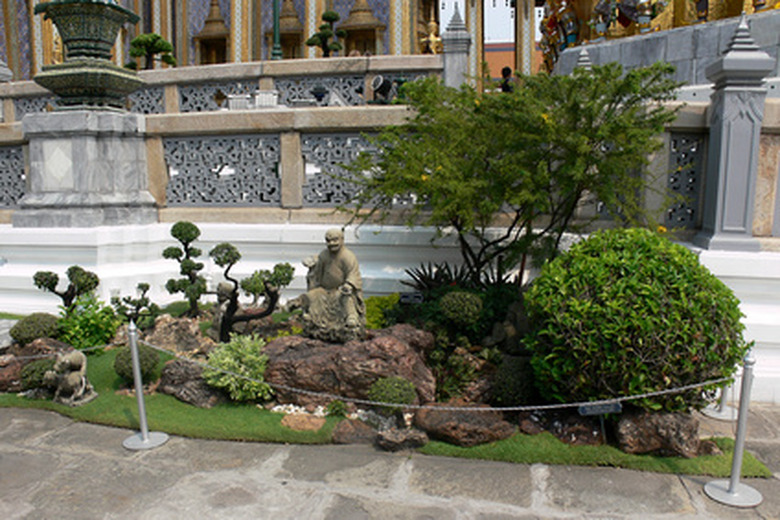How To Take Care Of Mini Pine Trees
The mini pine, or pine bonsai, is a natural pine tree cultivated to grow smaller than its natural height and width. When carefully cultivated, the entire tree, including its pine needles, are proportionate in size.
Although some aspects of the mini pine's care are similar to the natural sized pine tree, certain aspects, which are different, are required to maintain the mini pine's healthy growth.
Step 1
Select a well-drained potting container for the pine bonsai. Choose a container with a depth that is equivalent to the trunk's diameter and one- to two-thirds the tree's height. Elect rot-resistant wood or clay containers over plastic ones, as pine bonsais prefer drier soils over moist ones.
Step 2
Plant the young pine bonsai in nutrient rich, loamy soil. Prepare the soil by combining equal amounts of nutrient-rich soil, pine bark compost, and peat moss. Incorporate the ingredients thoroughly. Line the bottom of the container with a layer of soil and position the mini pine in the center of the container. Fill the container with soil, pressing just firmly enough to secure the bonsai's upright position.
- The mini pine, or pine bonsai, is a natural pine tree cultivated to grow smaller than its natural height and width.
Step 3
Water the pine bonsai thoroughly but infrequently, allowing the tree to dry out completely in between watering. Check the soil's moisture by placing your finger 1 to 2 inches into the soil, near the roots. Water the pine bonsai only when the soil feels completely dry. Use tepid water to irrigate the tree until the excess water begins to exit the bottom of the container.
Step 4
Situate the pine bonsai in a warm location that receives at least 6 to 8 hours of full sunlight each day. Keep it away from areas with direct heat, such as heating vents and grills.
Step 5
Feed the pine bonsai in the early spring. Select a well-balanced, slow release fertilizer such as a 10-10-10. Distribute the fertilizer evenly throughout the container at half strength. Water the fertilizer thoroughly into the soil. Allow the excess water to run from the drainage system.
- Water the pine bonsai thoroughly but infrequently, allowing the tree to dry out completely in between watering.
Step 6
Prune the pine bonsai annually, just before the onset of its growing season. Trim back the branches and stems to develop the desired shape and size. Be conservative with the amount of reduction. Develop the shape gradually over the course of several years.
Step 7
Change the natural shape of the pine bonsai by wiring the trunk and branches. Complete the wiring process after the end of the growing season and immediately after the annual pruning. Use thin, cooper wire that is approximately one-third the thickness of the branch or trunk to be wired. Apply the wire from the base of the branch to its tip. Wrap the wire in a circular motion around the branch, at a 45-degree angle. If wiring the entire tree, complete the trunk first, then primary branches, followed by secondary branches.
- Prune the pine bonsai annually, just before the onset of its growing season.
- Trim back the branches and stems to develop the desired shape and size.
Things Needed
- Peat moss
- Pine bark compost
- Potting container
- Soil
- Scissors
- Water
